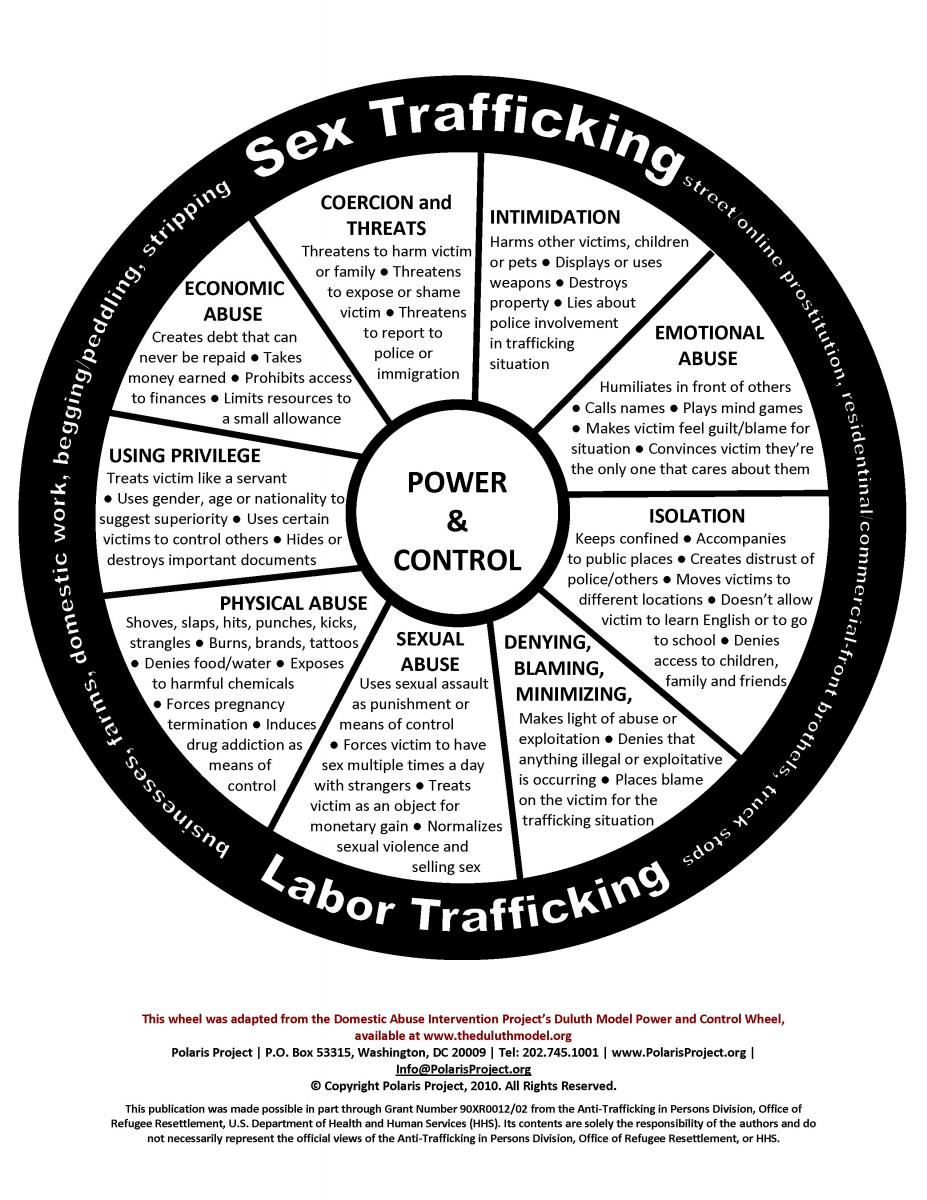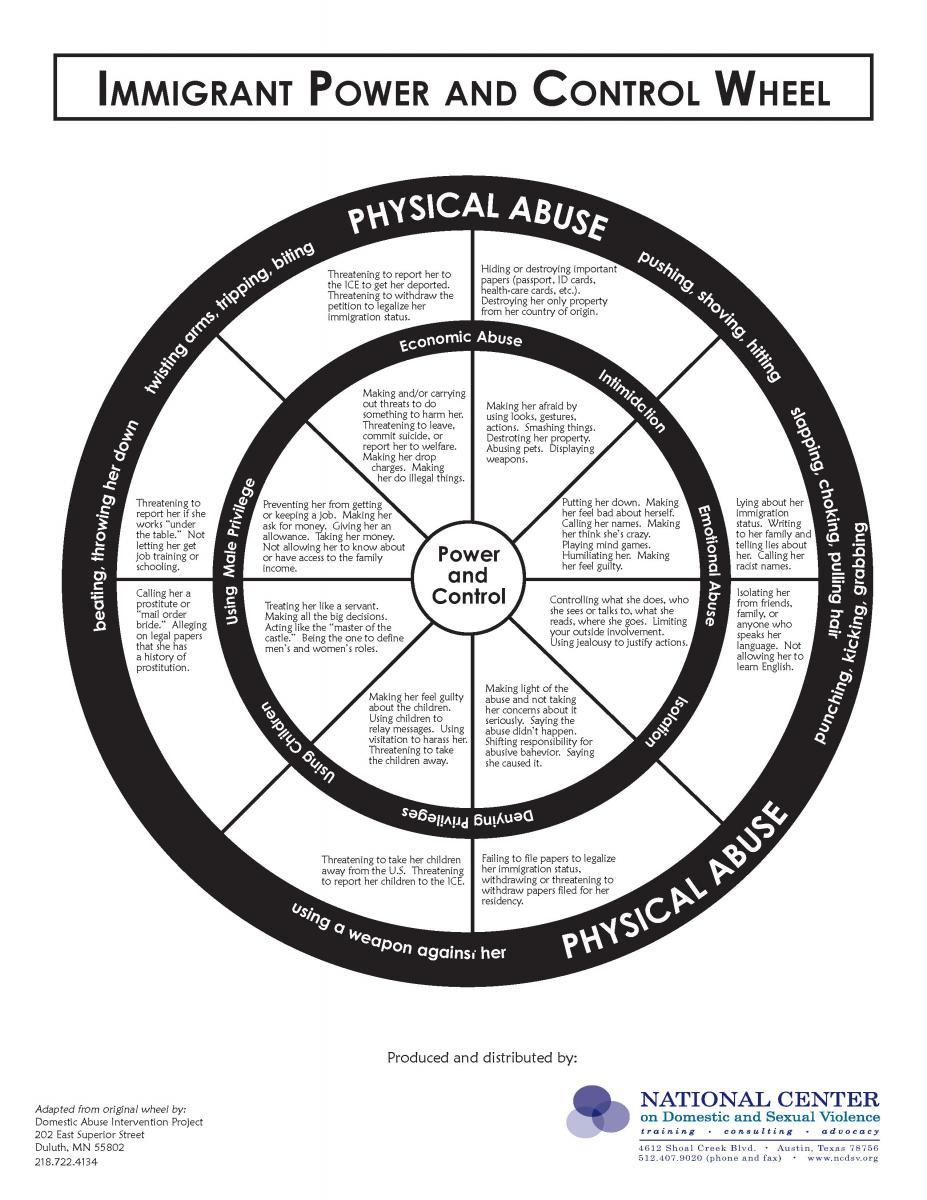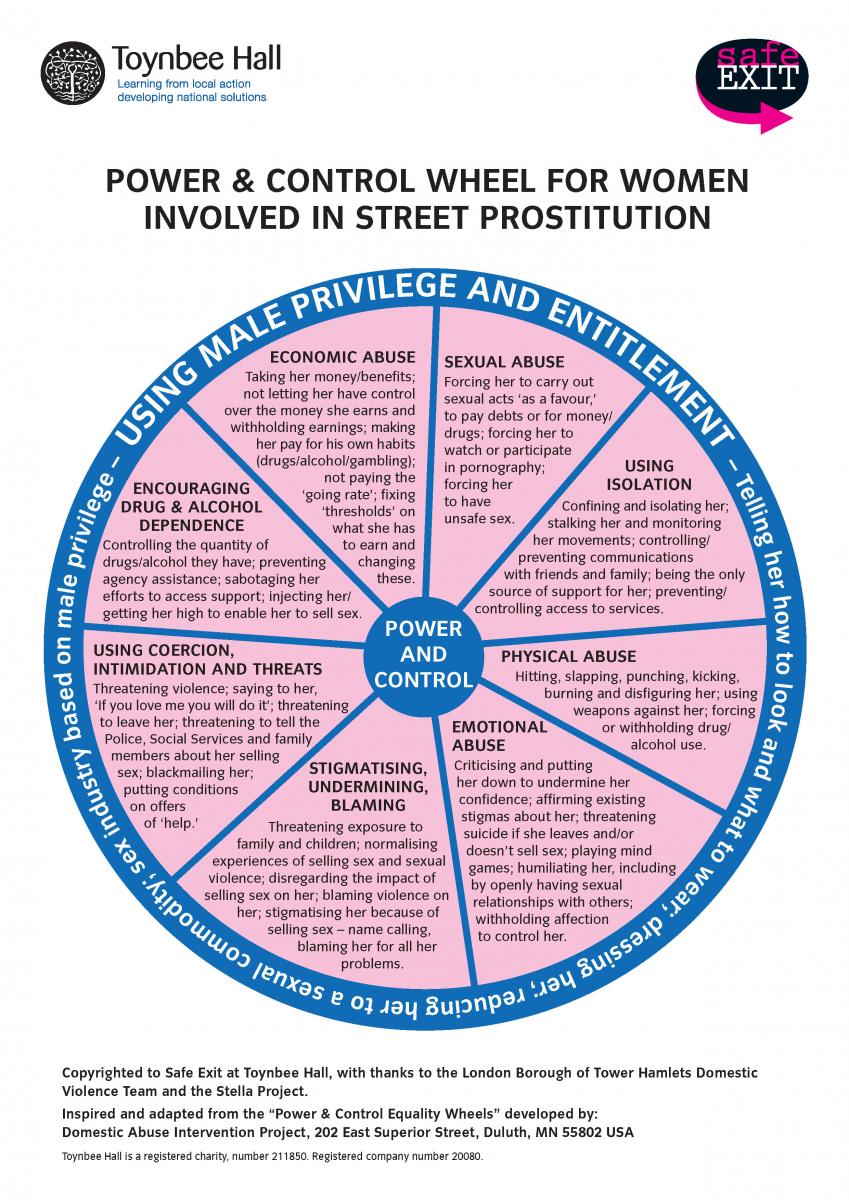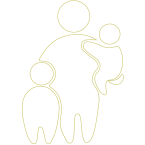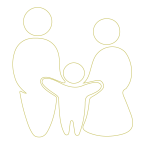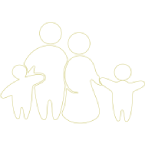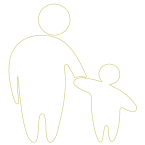What is human trafficking? Human trafficking, also known as trafficking in persons (TIP), is a form of exploitation in which perpetrators use force, fraud, or coercion to control victims for the purpose of engaging in commercial sex acts or labor services against their will. Human trafficking is a crime under federal and international law, as well as a crime in every state in the United States.
Sex trafficking is the recruitment, harboring, transportation, provision, obtaining, patronizing, or soliciting of a person for the purposes of a commercial sex act, in which the commercial sex act is induced by force, fraud, or coercion, or in which the person induced to perform such an act has not attained 18 years of age (22 USC § 7102).
Labor trafficking is the recruitment, harboring, transportation, provision, or obtaining of a person for labor or services, through the use of force, fraud, or coercion for the purposes of subjection to involuntary servitude, peonage, debt bondage, or slavery (22 USC § 7102).
There are many myths and misconceptions about human trafficking. Learn more from the U.S. Department of Homeland Security.
Adults, teenagers, and even children can be victims of human trafficking. Many are forced to work in prostitution or the sex entertainment industry, but trafficking also occurs in forms of labor exploitation in urban, suburban, and rural areas. Victims of labor trafficking who have been identified in the United States include domestic servants, restaurant staff, hotel employees, factory workers, and agricultural laborers.
Traffickers use various techniques to control their victims and keep them enslaved. Some traffickers hold their victims under lock and key. However, the more frequent practice is to use less obvious techniques including:
- Debt bondage – enormous financial obligations or undefined/increasing debt
- Isolation from the public – limiting contact with outsiders and making sure that any contact is monitored or superficial in nature
- Isolation from family members and members of their ethnic and religious community
- Confiscation of passports, visas, and/or identification documents
- Use or threat of violence toward victims and/or family members
- The threat of shaming victims by exposing circumstances to family
- Telling victims they will be imprisoned or deported for immigration violations if they contact authorities
- Control of the victims' money (e.g., holding money for "safe-keeping")
The Trafficking Victims Protection Act (TVPA) of 2000 made trafficking in persons a federal crime. It was enacted to prevent human trafficking over seas into the United States, to protect victims and help them rebuild their lives, and to prosecute traffickers and impose federal penalties. Prior to enactment of the TVPA, no comprehensive federal law existed to protect victims of trafficking or to prosecute their traffickers. The TVPA has been reauthorized and amended four times since 2000 (in 2003, 2005, 2008, and 2013).
The following is a list of red flags to keep in mind when identifying a potential victim of human trafficking. This list is intended to encompass transnational and domestic trafficking, as well as both sex and labor trafficking. Some indicators may be more strongly associated with one type of trafficking.
Common Work & Living Conditions. The individual in question:
- Is not free to leave or come and go as they wish
- Is under 18 years of age and is providing commercial sex acts
- Is in the commercial sex industry and has a pimp/manager
- Is unpaid, paid very little, or paid only through tips
- Works excessively long and/or unusual hours
- Is not allowed breaks or suffers under unusual restrictions as work
- Owes a large and/or increasing debt and is unable to pay it off
- Was recruited through false promises concerning the nature and conditions of their work
- Is living or working in a location with high security measures
Poor Mental Health or Abnormal Behavior. The individual in question:
- Exhibits unusually fearful, anxious, depressed, submissive, tense, or nervous behavior
- Reacts with unusually fearful or anxious behavior at any reference to "law enforcement"
- Avoids eye contact
- Exhibits a flat affect
Poor Physical Health. The individual in question:
- Exhibits unexplained injuries or signs of prolonged/untreated illness or disease
- Appears malnourished
- Shows signs of physical and/or sexual abuse, physical restraint, confinement, or torture
Lack of Control. The individual in question:
- Has few or no personal possessions
- Is not in control of their own money, and/or has no financial records or bank account
- Is not in control of their own identification documents (e.g., ID, passport, or visa)
- Is not allowed or able to speak for themself (e.g., a third party may insist on being present and/or interpreting)
- Has an attorney that they don't seem to know or to have agreed to receive representation services from
Other. The individual in question:
- Has been branded by a trafficker
- Exhibits a lack of knowledge of whereabouts and/or does not know what city they are in
- Exhibits a loss of a sense of time
- Has numerous inconsistencies in their story
- Claims to be "just visiting" and is unable to clarify where they are staying or provide an address
